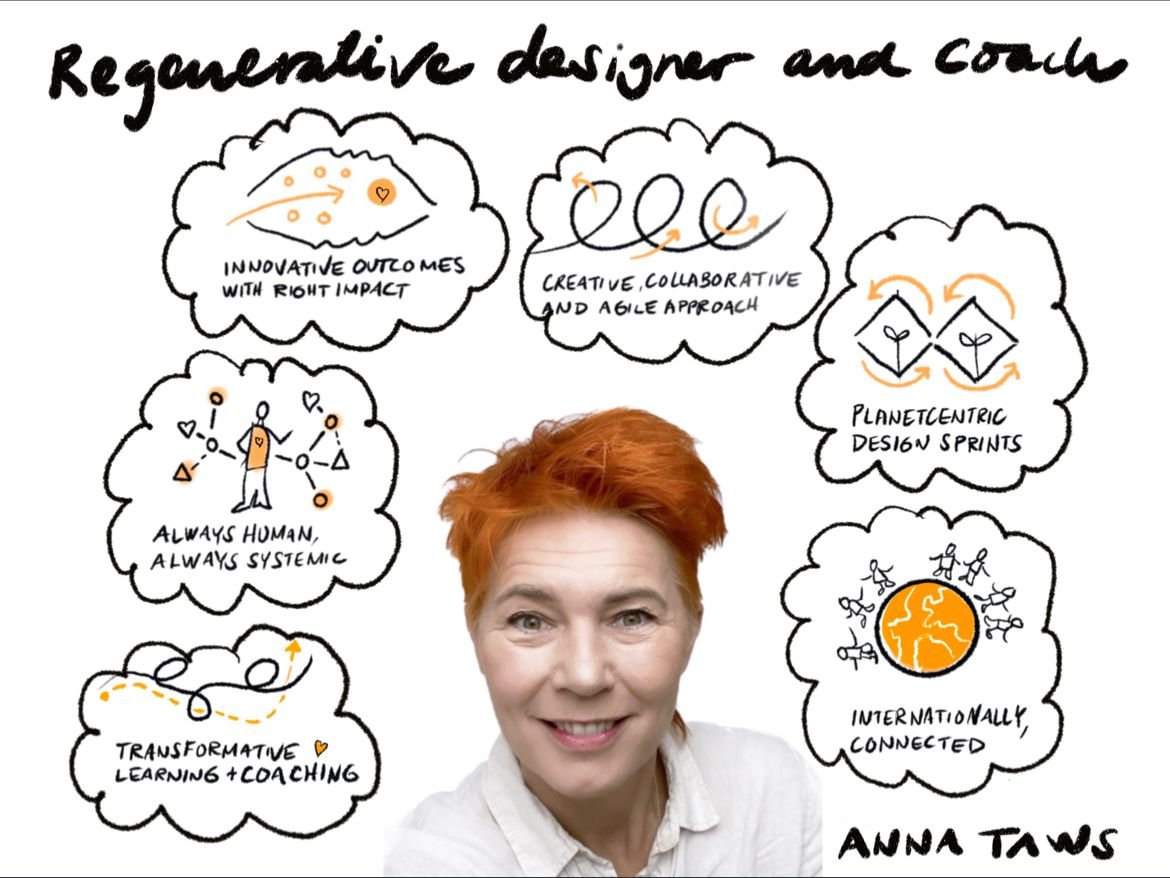Unlock the Power of Regenerative Design
Embedding regenerative design is essential for equipping future generations with the skills needed for a resilient green and digital economy.
I help companies to tackle complex, 'wicked' problems by equipping them with regenerative design expertise. Together, we can create innovative, sustainable solutions that drive the transition to a resilient green economy.
By addressing the interconnected personal and work-life climate, companies can significantly reduce stress and boost employee motivation. Prioritizing well-being and resilience supports mental and physical health, while tackling environmental and social issues fosters ethical responsibility and positive change, leading to a more engaged and satisfied workforce.
Mastering Wicked Problems with Regenerative Design
I'm on a mission to equip communication people and designers with the green skills they need to fuel the green transition.
Design is a 'frontline' green skill; it leads the way in creating products, buildings, and places that use fewer resources, reuse them, or even grow them. It is also a ‘hearts and minds’ green skill in the way it makes sustainable living the easy and desirable choice.
There is a critical need to upskill designers:
🌸 71 % of designers think the demand for environmental design is going to grow
🌸 43 % of designers think they have the skills to meet the demand for environmental design
🌸 46 % of the UK’s designers believe their education has equipped them to design for planet
From designcouncil.org.uk
Here are some key points to achieve this mission:
1.Education and Training
Providing comprehensive skills and training in sustainable design is crucial. This includes courses in sustainable materials, energy efficiency, and circular economy principles.
2. Tools and Resources
Equipping designers with the tools and resources they need to integrate sustainability into their projects is essential. This can include access to databases of eco-friendly materials, software for lifecycle analysis, and guidelines for sustainable design.
3. Collaboration and Networking
Promoting collaboration between designers, researchers, and businesses to share knowledge and innovative solutions is vital. Networks and forums can play a key role in spreading best practices and new ideas.
4. Inspiring Examples
Showcasing successful examples of sustainable design can inspire and motivate. Case studies and real-world examples can illustrate how green design solutions can be effectively implemented.
5. Policy and Standards
Working with policymakers to create and uphold standards and regulations that support sustainable design is important. This includes building codes, product standards, and incentives for green innovations.
6. Consumer Education
Informing and educating consumers about the benefits of sustainable design is crucial. When consumers understand the value of sustainable products and buildings, demand increases and drives further innovation.
7. Lifecycle Design Thinking
Encouraging lifecycle thinking among designers, where they consider the entire lifecycle of a product from raw materials to end-of-life, is key. This includes designing for reuse, recycling, and minimizing waste.
By focusing on these areas, we can equip designers with the skills and knowledge they need to lead the green transition and create a sustainable future.
Embrace Regenerative Design: Your Journey Begins Here
Where to start?
Embarking on a journey towards a more regenerative lifestyle can seem daunting, but it begins with small steps. Start with yourself, find your community, and become part of a larger eco-systemic transformation. Together, we can tackle wicked problems and create sustainable solutions for a resilient green economy. 🌱 #RegenerativeDesign #Sustainability #GreenEconomy #CommunityTransformation
Please reach out for a chat! Feel free to email anna@taws.dk
Anna

